Connection profiles for polycarbonate
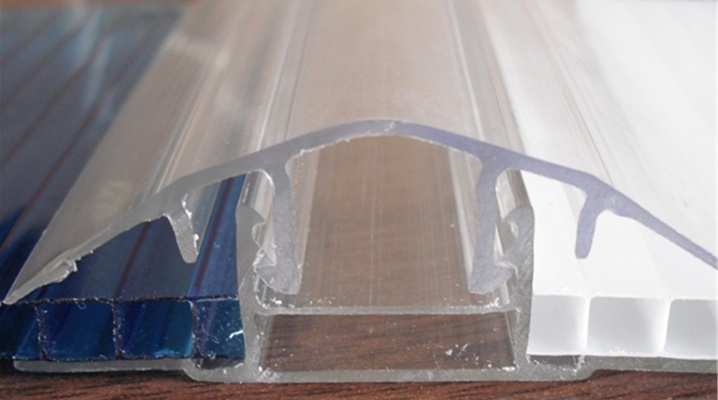
Today, polycarbonate is widely used in a wide variety of applications due to the unique performance characteristics of this material and its affordable cost. Particular attention should be paid to the versatility of the translucent polymer, from which light roofs, fences and many other structures are erected. At the same time, it is important to know what kind of connecting profiles for polycarbonate are, and how to use them correctly, taking into account the peculiarities in each specific case. It is worth noting that today manufacturers offer a fairly wide range of such fasteners, which greatly simplifies the installation of panels.
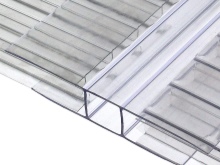
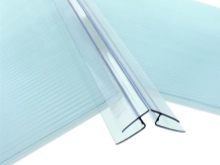
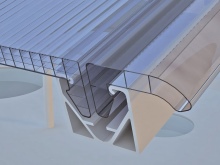
What it is?
It is no secret that polycarbonate enjoys record popularity due to its characteristics. It should be noted that the scope of the material is not limited to greenhouse structures and sheds in private households. These panels are successfully used, for example, in the construction of sports complexes (stadiums), as well as in the arrangement of summer grounds for public catering establishments. As practice shows, the list of important points includes not only the key parameters of the polycarbonate itself. It is also about how to correctly join the sheets in various situations, taking into account the design features of the future structure.

It is for these purposes that the developers have created a connecting, that is, a docking profile. It allows you to quickly create a continuous surface from sheets of both honeycomb and monolithic polycarbonate. Individual elements have to be combined in different ways, and in this case the question arises regarding the existence of some kind of universal method. Unfortunately, this does not yet exist, however, manufacturers offer several types of profiles, focused on solving various problems.
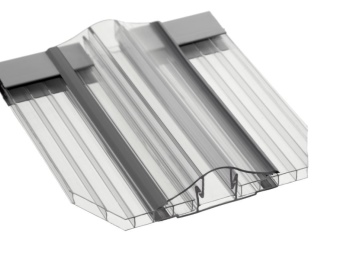

Species overview
Commercially available elements in the form of strips for joining polycarbonate sheets differ from each other in several ways. In this case, we are talking about the material and configuration. So now the following types of profile are offered to the consumer.
- One-piece, marked "HP".

- Detachable - "НСР".

- Ridge.
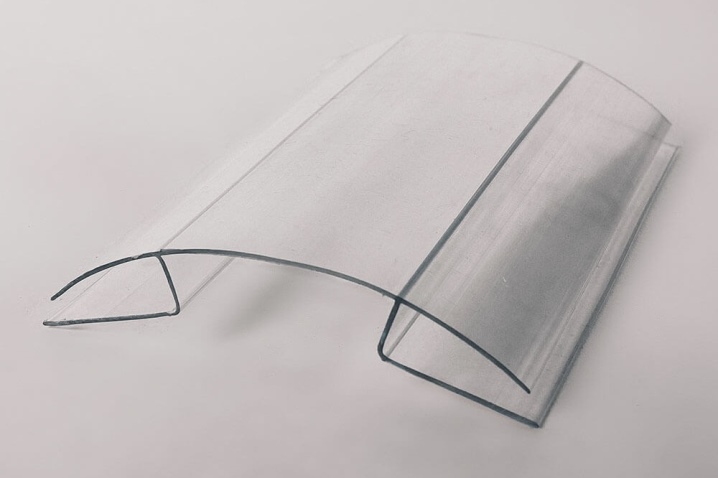
- Angular.
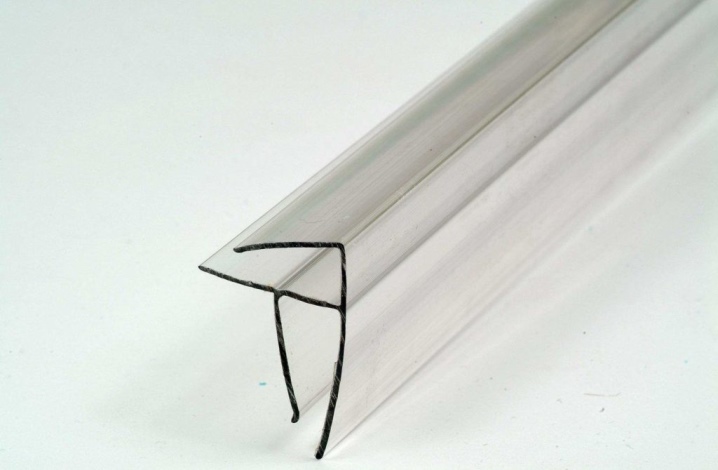
One-piece profiles for joining cellular polycarbonate are made only of plastic. It is widely used when it is necessary to connect individual elements of both straight and curved structures. This is a flexible H-shaped bar with petals bent inward. Such products are available in the following sizes:
- plank length - 6 m;
- the width of the petals is 2, 3 and 4 cm;
- opening - 4, 6, 8 and 10 mm.
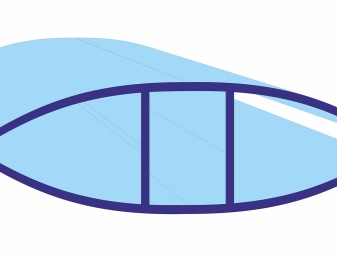

Pluggable connectors are functional and easy to use. It is worth noting that they can be plastic and aluminum. These docking profiles consist of two parts.
- Base, which is the base on which the sheet is located.
- A cover that covers the docking point.


It is important to consider that the installation is carried out using self-tapping screws or special fasteners. In situations with plastic joint strips, the installation of thermal washers is provided.
Even with a higher cost compared to the one-piece type, the split profile has a whole list of undeniable competitive advantages.
- Versatility.
- Ease of installation.
- Maximum bond strength and tightness.
- The possibility of dismantling at minimal cost.
- Aesthetics.
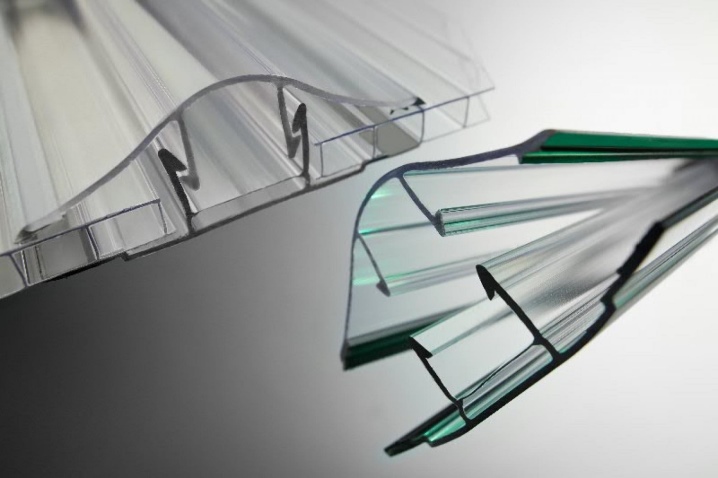
The purpose of the ridge docking strips can be determined based on their name. They are used for joining top panels when installing gable roof structures. The ridge profile is made of plastic or aluminum alloy, and it can be split or one-piece.

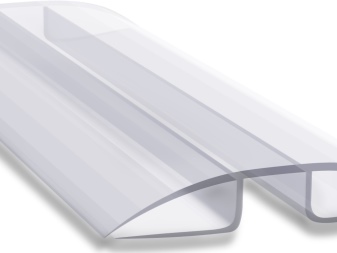
The corner type is, in fact, two end profiles with a U-shaped section, which are rigidly fixed at an angle of 90 degrees. It is important to note that such a corner can only be plastic and transparent. Its main characteristics include:
- increased strength;
- reduced flexibility;
- versatility due to the possibility of joining polycarbonate sheets of different thicknesses.
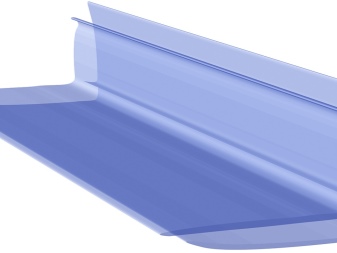
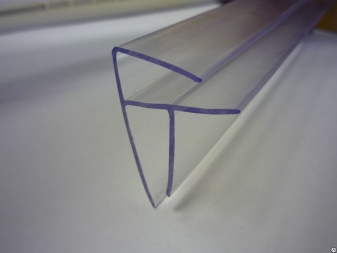
During installation, it is strongly recommended to take into account that the corner profile cannot be bent and twisted. In addition, during transportation and storage, the slats must be exclusively in a horizontal position.
Installation features
The method of joining polycarbonate sheets is determined in each specific case, taking into account the peculiarities of the structure being built, as well as the personal preferences and financial capabilities of the owner (customer). Initially, it is worth paying attention to how to properly connect polycarbonate sheets to each other using an H-shaped profile. It is important to remember that one-piece strips have grooves for joined polycarbonate sheets and a central channel, which is formed by two bridges. The latter is intended for mounting the profile itself. If we are talking about aluminum products, then the installation is carried out using self-tapping screws for metal, and in situations with polymer models - self-tapping screws and thermal washers.

The fasteners themselves must be placed at right angles to the surface of the profile to be mounted. In this case, the central channel of the strip, the self-tapping screw must go through and enter the frame (crate) by at least 5 mm. It is also important to take into account the need for a gap of 2-3 mm between the profile and the end of the joined sheets. It is designed to compensate for possible deformations during temperature fluctuations. The standard installation algorithm using one-piece planks includes the following steps.
- Insert the end of the sheet to be joined into the groove of the profile.
- Check the correct position of the panel and the butt piece.
- Fasten the outermost plank.
- Insert the second panel into the free groove.
- Fasten the polycarbonate sheets to be installed with self-tapping screws.
- Install end strips if necessary. It is recommended to make holes in these profiles to drain condensate.
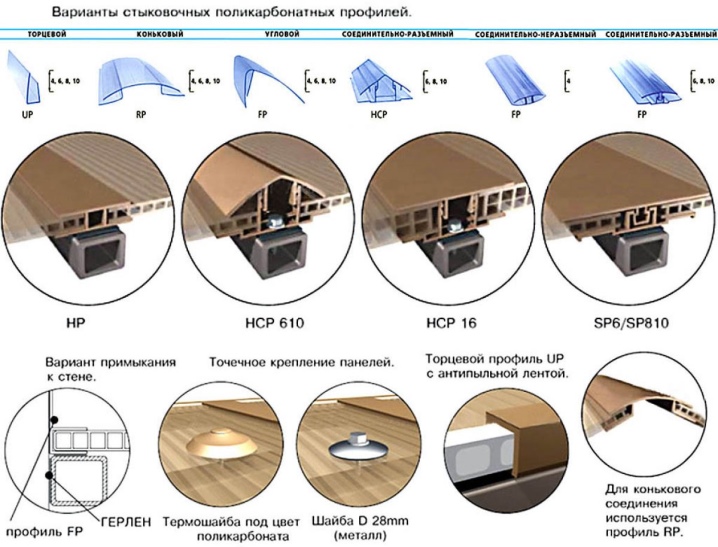
Experienced craftsmen advise the end part of the sheets to be sealed with tape or machine oil on it before installing the connecting element. This will greatly facilitate the procedure for moving the panel in the groove.
Before attaching the extreme profile, you need to place the edge of the sheet in it, and place a similar bar on the other side. It is important to take into account that without support, the abutting panels may not withstand the load.
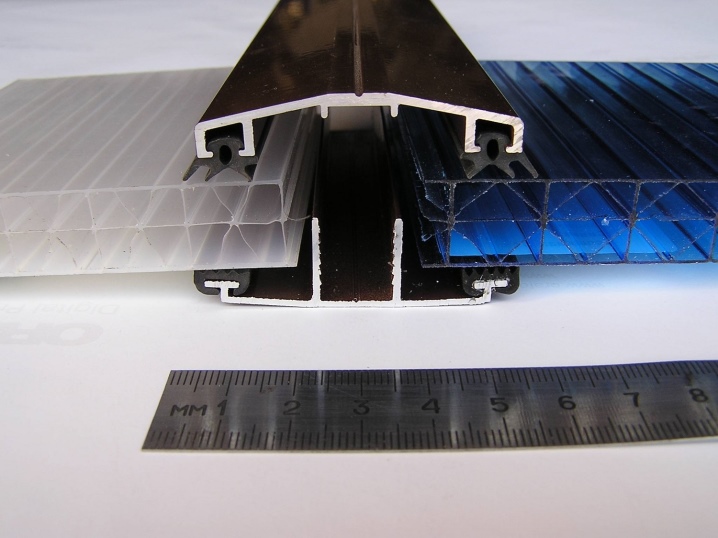
As already noted, plug connectors are easy to use and versatile. This is most important when erecting curvilinear structures and, in particular, arched elements. The installation procedure using such products includes the following steps.
- Determine the exact location of the docking profile on the frame (crate) and attach its lower part (base) with self-tapping screws. As in the case of one-piece planks, the fasteners must pass through the central channel in 30-50 cm increments.
- Place a polycarbonate sheet on the bottom of the strip with a gap of 2-3 mm between the vertical wall of the duct and the end surface of the panel.
- Repeat the same steps with the other side of the sheet. In this case, the bar is fixed pointwise in compliance with the mentioned thermal gap.
- Fasten the panel itself with self-tapping screws (if necessary, with thermal washers).
- Place according to the same principle and fix the second abutting polycarbonate sheet.
- Lay the cover of the detachable connector along its entire length and snap it into the groove with light blows.
- Install perforated tape and end profiles along the edges of the panel, and make holes for condensation in the bottom end strip.
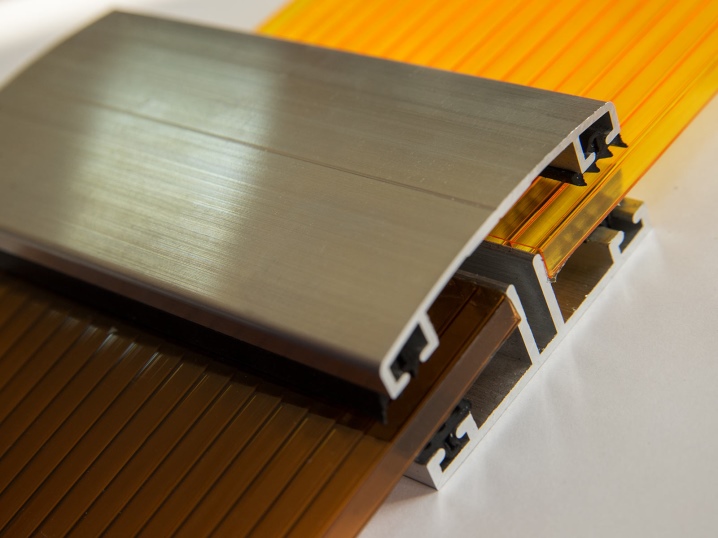
Corner fittings, as well as ridge fittings with RP designation, are designed for mounting polycarbonate sheets at an angle of 90 to 150 degrees. They are used in a wide variety of situations, including gable roofs and arched roof structures. As already noted, such corners are solid and two-piece, made of plastic and aluminum. It is these parameters that determine the features of their installation.
It should also be borne in mind that the ridge profile has a 40 mm high lock for the most reliable connection of the panels, taking into account the temperature gaps.
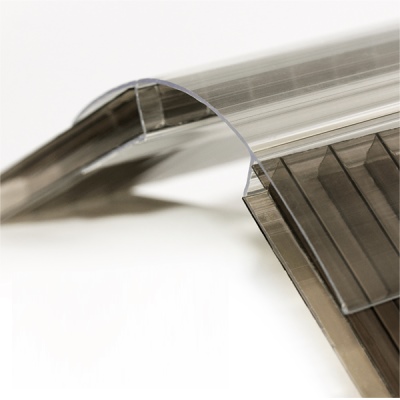
The installation of the connectors in question is as follows.
- The polycarbonate sheet is fixed in compliance with the gaps when marking the location of the butt element. It is important not to fix the top of the panel.
- If necessary, attach (glue) the perforated tape to the ends.
- An angular (ridge) profile is mounted on the frame along the entire length of the joint.
- The plank, together with the tops of the sheets, is fixed to the supporting structure.
- The “wings” of the ridge profile snap into place.
- The joint is sealed with a sealant.
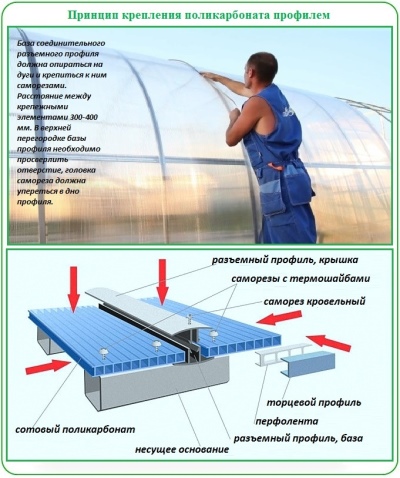
In addition to all of the above, it is worth paying attention to the key points associated with the installation of docking profiles, regardless of their type. And in this case we are talking about the following general rules.
- The optimum temperature for performing the described work varies from 10 to 22 degrees. Under such conditions, deformation of polycarbonate panels at the joints is almost completely eliminated.
- When working with aluminum products, it is necessary to install spacers (rubber or silicone) in order to create an expansion gap. The point is that plastic and aluminum have different rates of thermal deformation.
- Particular attention should be paid to the construction of the supporting structure. The step between its elements is calculated taking into account the dimensions of the sheets so that all joints must have a rigid support. It means that the docking profile should not end up in a suspended state. This, firstly, excludes the possibility of its fixation, and secondly, it minimizes the rigidity and reliability of the connection itself.
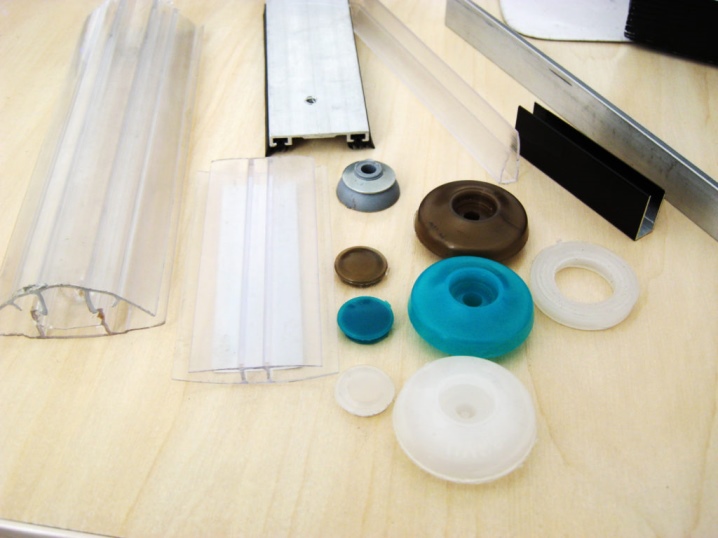
In addition to all of the above, it is worth highlighting another important nuance of using one-piece strips. In such situations, it is necessary to monitor the exact correspondence between the dimensions of the groove of the strip and the thickness of the PC panels.
An optional condition is the application of a film with micropores under the profile, which improves the quality of the joint.
For more information on connecting profiles for polycarbonate, see the next video.













The comment was sent successfully.